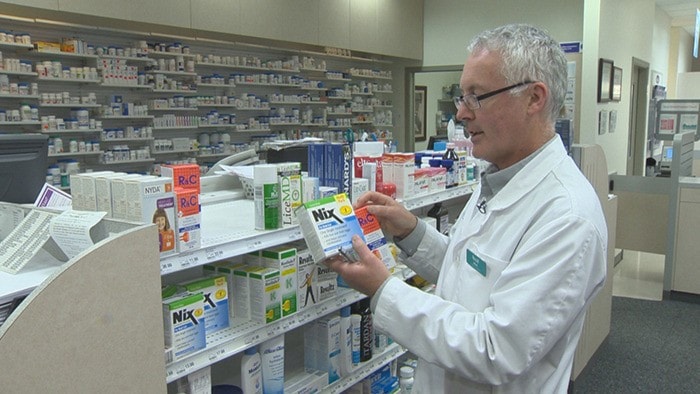More than 250 parents signed a petition to School District 71 in an effort to combat head lice in Comox Valley schools.
The petition on change.org, called School District 71: Please help us keep head lice out of our schools, went live on Tuesday and by Thursday morning, 200 parents had signed. By Friday afternoon, nearly 260 had signed.
Parents Shaunna Powers and Lisa Gillespie — who say their daughters had head lice six and nine times, respectively, last school year — started the petition.
Gillespie's daughter was at Queneesh Elementary last year, but Gillespie says she pulled her daughter out of school in the spring.
"When May came around we'd gone through it nine times. I was losing my mind; it's exhausting. I had to pull her from school because the emotional trauma that she suffered was just intense," says Gillespie, adding some parents aren't treating head lice on their children properly so the problem is circulating in schools. "As soon as I pulled her out, no more head lice … so I know that I was doing my job.
"She's at (Navigate powered by) NIDES now and here we go again — we just got a notice (of head lice from the school) last week — and so I said, 'That's it, I'm starting a petition. I've had it; this needs to stop.'"
Gillespie wants the Board of Education to change the district's head lice policy to reflect traditional practices. She wants the head checks resurrected, and when head lice is discovered on a student, for that student to be sent home immediately. She also wants students checked to ensure the head lice is gone before they are allowed back to school.
District superintendent Sherry Elwood says district head lice policies were changed in 2008 — after consultation with parents, teachers and others, and following the lead from Island Health, (formerly Vancouver Island Health Authority), — to take an educational approach.
"We take an educational perspective," she says. "We will not ban a child from attending school if they are indeed found to be having a case of lice. We will do everything we can to educate the child, the parents, any siblings that are involved. We help resource them in both referral to public health if that's needed, or into accessing the kinds of things that they would need to remove the lice."
According to the district's policy created in 2008, head checks were discontinued as a district practice, the idea being that education and treatment practices would prove successful and they would no longer be necessary.
Elwood points out Island Health considers head lice a nuisance, not a public health concern.
Allan Greene, pharmacy manager at Courtenay's Rexall, agrees head lice create minimal risk to health, but he says they can be troublesome for parents.
"It does take parents quite a bit of work to (remove them) because they have to treat the child, they have to treat the things within the house — vacuum furniture, do laundry — they have to be sure the child isn't sharing combs and doing head-to-head contact … at school because that's the easiest way to spread them," he says, adding it's important parent follow up two weeks later to ensure lice are gone.
He adds head lice is common and he has seen parents come in repeatedly for supplies to remove them. These parents, he says, could be removing the lice properly the first time but if another child at school has lice child can be reinfected.
Elwood says if district staff receive the petition they will bring the matter up with trustees to see if the board would like to revisit the policy.
"My question would be: We change our policy to what? To banning students from school over something that is by public health, not deemed a public health concern?" she says.
• • •
Island Health, (formerly Vancouver Island Health Authority), considers 'bug busting' the preferred method of lice control. The method involves wet-combing using a lice comb to remove the lice. According to an IH head lice brochure, treatment every four days for two weeks is necessary to ensure new lice are removed as the 'nits' or eggs hatch.
According to the brochure, combs, hairbrushes and anything used to treat lice (towels etc.) must be cleaned in hot soapy water, but the home does not need to be cleaned.
Alternately, a number of medicated treatments are available at local pharmacies.
Head lice are not a sign of poor personal hygiene and are actually attracted to a clean scalp. While they can't jump or fly from one person to another, they can travel via hats and scarves and from head-to-head contact.
— With a file from CTV News.
